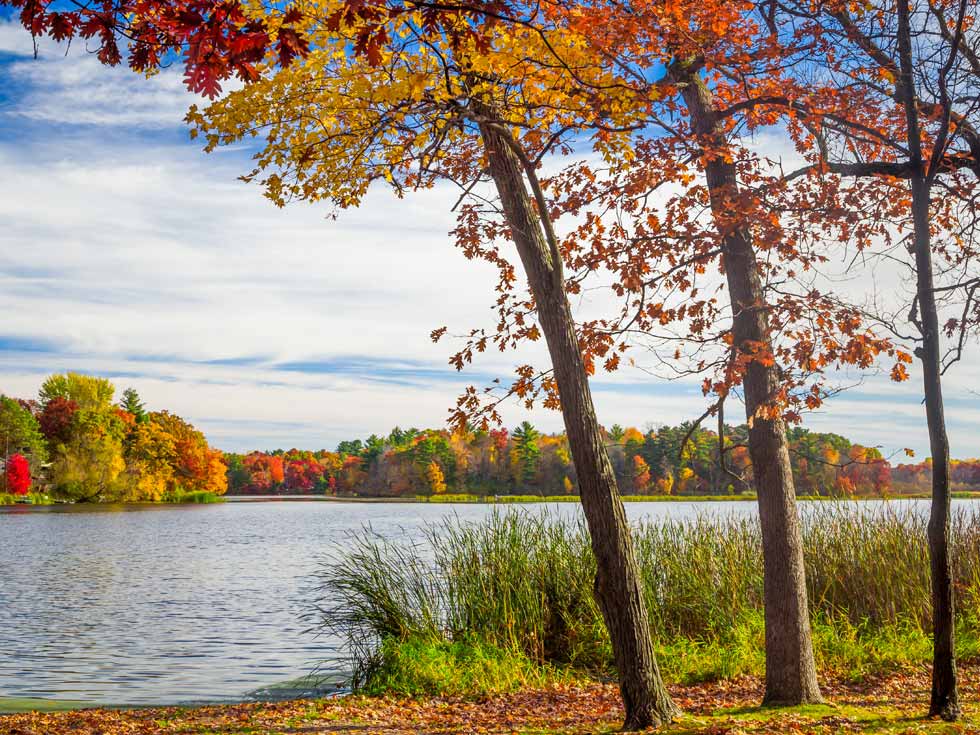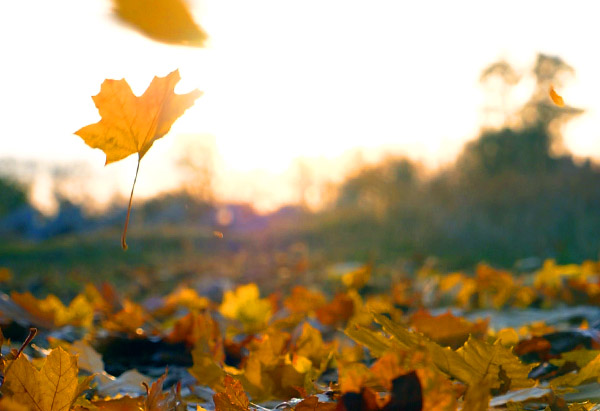Autumn is a wonderful time of year for vibrant leaves, bonfires, and warm sweaters. It’s also a time to prepare for Winter and plan ahead for a Spring. Here are some suggestions for taking care of your natural areas this Autumn.
Collect Seeds
If you are looking to expand your natural area or improve an existing area where native plants have thinned out, collect native seeds in late fall. The best chance for native plant species to reestablish from seed is to mimic their natural condition. In nature, the seeds would drop from the plant, experience early winter freeze/thaw cycles, and then the spring rains. Spreading native seeds in the fall exposes the seed to all these conditions. The easiest thing to do is to wait until about now, pull the seed heads off the plants you want more of, and spread them right away. If you want to be more thorough, let the seed heads dry out and remove the actual seeds from the chaff, which is the dry protective casings around the seeds. This gives the seeds a better chance of contacting the soil and germinating. Either way, it’s better than doing nothing!
Consider a Prescribed Burn
Fall is a great time to refresh your natural area by carefully burning. Fire removes the plant duff exposing the soil to more sunlight. Non-native plants often lack the deep roots of native plants and so die when exposed to fire. There is an art to prescribed fire which also requires a permit from the Environmental Protection Agency (which can take up to 120 days so plan ahead). Fall burns normally start in November following the first heavy frost and can continue until it snows. If the timing doesn’t work out for you, the spring burn season is longer than the fall season and typically takes place between early March and mid-April, depending on the snow.
Learn more about ILM prescribed burning services.
Plant Trees and Shrubs
Fall is the best time to plant native trees and shrubs. Planting in the fall gives trees and shrubs an extra growing season before the stress of summer. The combination of cooler temperatures and fall rain allows trees to establish their roots, making it easier for them to adjust to extreme heat or drought in the summer. While truly native plants are becoming more readily available at your local garden center, your area conservation organization or forest preserve district may also offer native plant sales. If you have the space for a large tree, consider planting an oak. Oaks are the best trees to plant for nature. A single oak tree will support over 500 species of insects which are vital for pollination services and a food source for birds. Contrary to common perception, a happy oak tree can grow relatively quickly, from 1 to 3 feet per year throughout its lifetime. Oaks grow fastest in the first 10 or 15 years and can easily grow 2 to 3 feet per year when they are young.
Remove Fallen Leaves from Your Pond
Organic sediment buildup is a common concern for pond owners. Sediment can be transported from surface runoff or build up as plants die off for the season and decay. A significant source of organic sediment can come from fallen leaves when they decay. As they decay, they also use up oxygen which can be in short supply in the winter. Rake up leaves before they blow into your pond and skim out leaves that make their way into the water if it is reasonable to do so.
Looking Ahead To winter
Winter is the perfect time to clear out invasive species. Buckthorn is an aggressively invasive plant species that threatens the health of native plants and animals in environments across the United States. To maintain a healthy, balanced ecosystem, you need to remove buckthorn from your property.
Learn more by reading The ILM Guide to Buckthorn Removal.




